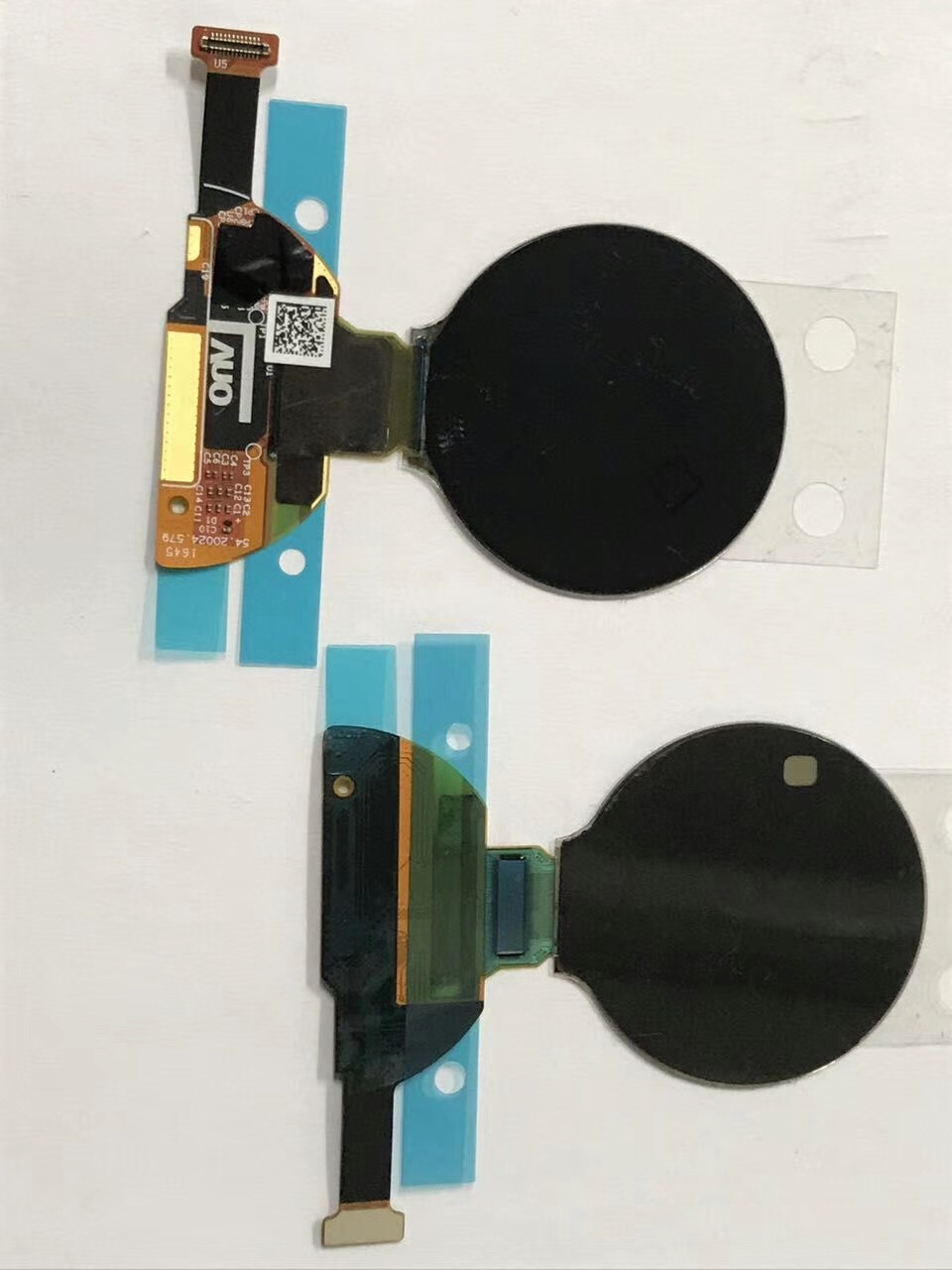Wearable OLEDs - Introduction and Latest Industry News - Page 10
AUO demonstrated its latest OLED and Micro-LED technologies at SID-2018
Taiwan-based AU Optronics (AUO) demonstrated the company's latest OLED, LCD and Micro-LED technologies at SID 2018.
The company had a relatively small OLED demonstration area, showing its True-Circle in-cell Touch AMOLED displays (1.2" and 1.4") unveiled in May 2017. These displays are already shipping. AUO also unveiled its large 13" transparent AR AMOLED (68% transmittance). This transparent OLED was shown for the first time. The 13" panel features a resolution of 1150x575 (100 PPI) and a brightness of 200 nits.
Visionox demonstrates its latest PMOLED and AMOLED displays at SID 2018
China-based OLED producer Visionox had a very impressive booth at SID 2018, demonstrating the company's latest AMOLED and PMOLED displays and prototypes.
Visionox is now producing AMOLED displays for smartphones and wearables and the company showcased a wide range of AMOLED panels and also commercial phones that use these panels. Visionox also demonstrated many new display prototypes.
Here is Innolux's 1.4" round flexible AMOLED display
In October 2017 Taiwan-based Innolux started to produce its first flexible AMOLED display, a round 1.39" 400x400 (287 PPI) panel. This is a great display for wearable applications, mostly smart watches.
The short video above shows this interesting display in action, in our demo kit (which is also available to order).
New Everdisplay AMOLED displays added to the OLED Marketplace
Everdisplay is producing a range of AMOLED displays, for smartphones and wearables, and we have added three new EDO displays to our OLED Marketplace.
The three new displays are a 0.95" 180x120 AMOLED, a round 1.19" 390x390 AMOLED and a rectangular 1.41" 320x360 AMOLED. Let us know if you are interested in acquiring these displays!
Fraunhofer, Holst and VTT developed a new flexible OLED lighting bracelet produced at the EU PI-SCALE line
The Fraunhofer FEP, together with VTT and the Holst Center developed a new wearable OLED lighting bracelet, one of the first one of the first flexible organic electronic product to be produced at the European PI-SCALE pilot production line.

The yellow and red OLED deposition in this prototype was performed at the Fraunhofer FPP (which can handle both sheet-to-sheet and roll-to-roll processes), while the barrier web was produced at the Holst Centre. VTT integrated the OLEDs into the bracelet. Such a bracelet, with its low power consumption, could be used as a security device, as a fashion jewelry, and more.
ColorLink unveils VR and AR prototype devices that use Sony's OLED Microdisplays
During a wearable conference in Tokyo, Japan's ColorLink demonstrated its new VR and AR prototype devices, which both use OLED microdisplays. The company says that using OLED microdisplays it can produce more compact VR devices.

The ColorLink devices use 0.7" FHD OLED microdisplays, which are probably Sony's ECX335AF displays.
Skyworth demonstrates a flexible OLED bracelet at CES 2018
Last week we posted about Skyworth's CES booth, where the company reportedly demonstrated new household appliances that utilize flexible AMOLED displays. It turns out that Skyworth also unveiled a smart bracelet that utilizes a flexible OLED

This seems to be a very early prototype device, as the engineering is crude and it appears just to show an image - but still it is nice to see companies testing flexible OLED based designs.
AUO launches a new 1.2" 390x390 round AMOLED
AU Optronics launched a new round AMOLED for smartwatches and other applications. This panel is 1.2" in diameter (33.22 x 34.72 mm in size) with a high resolution (390x390, 460 PPI). Click here for more information on this new panel.
Let us know if you are interested in obtaining AUO's latest AMOLED panel, or browse for other OLEDs at our extensive OLED catalog.
Facebook launches the affordable Oculus Go VR headset with a fast-switch LCD
Oculus (Facebook) announced its new affordable VR headset, the Oculus Go. This $199 device will launch early next year for $199 and Facebook hopes that this will be a step towards its goal to get one billion people to use its VR products.

One of the ways that Oculus used to lower the cost of to Go headset is to switch from an OLED to an LCD. Oculus says that this is a "fast-switch LCD". It's too early to say how this display will compare to the current OLED used in the Oculus Rift. Looking at the slide above, it seems that the Go uses a single 2560x1440 LCD.
Valve says that recent advances in LCDs bring it up to par with OLED displays for VR applications
US-based video game developer Valve has announced that it will license more of its VR technology to hardware makers that can develop VR HMDs based on its technology. In addition to the tracking and input tech that was already licensed before, HMD makers can now use Valve's optical system, calibration tools and a supporting software stack.

Currently pretty much all high-end HMD devices adopt OLED displays as these panels offer faster refresh rates compared to LCDs. But Valve says that recent LCD advancements combined with VR specific calibration now make LCD a viable technology choice for high end VR systems.
Pagination
- Previous page
- Page 10
- Next page





